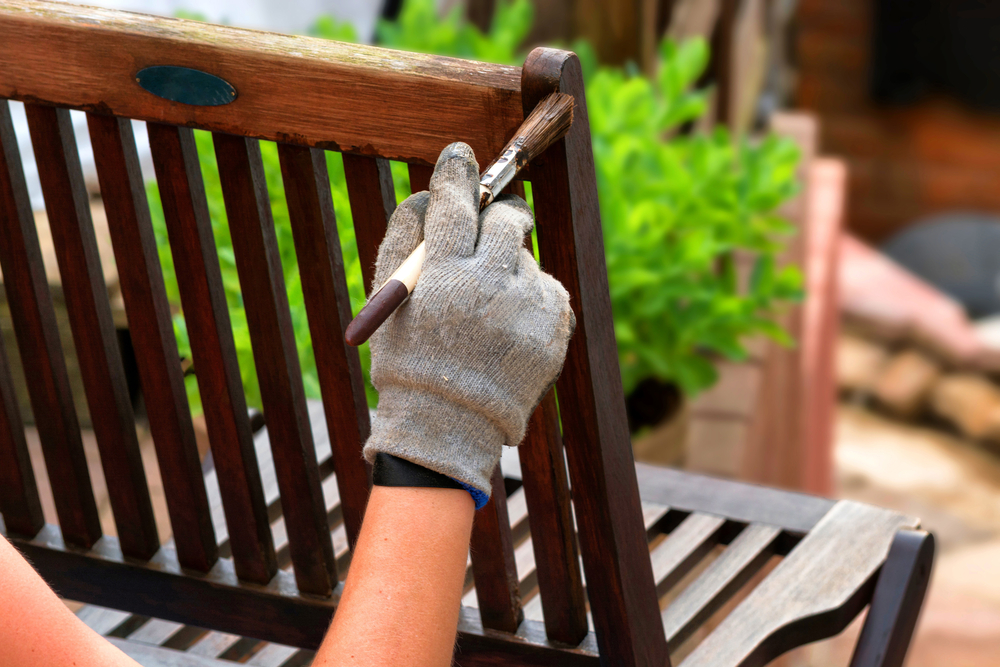Painting woodwork can be a messy and rather unsatisfying project unless you know exactly how to paint new woodwork.
Without the right preparation and equipment, you might end up with some unattractive results, and a blotchy and streaky finish.
So give yourself the best chance of success by following these tips on painting woodwork.
- Sand and clean all surfaces
Before you get started on painting any woodwork, you want to ensure that the surface is properly prepared so that the paint can easily stick to it.
This involves sanding down the surface thoroughly, especially if the wood is flaking, peeling, or blistering.
Any loose bits that are left on the surface of the wood will only make the final result look bumpy and unfinished.
A new layer of paint applied on a poorly prepared surface is also likely to peel away with the underlying finish, which means you will have to repaint the surface much sooner.
If there is a lot of peeling, a paint scraper will do the job. For flat surfaces, you can use a sander. You can also use pieces of sandpaper, but this will work best with surfaces that aren’t flat, as they can conform to the shape better than other tools.
Always start by sanding in the direction of the wood grain with coarse sandpaper. Then, when the majority of the flaking has been dealt with, you can tackle any edges with less coarse sandpaper.
- Take the proper precautions
Sanding involves a lot of loose dust made up of wood particles, paint, and other chemicals.
This dust can be irritating to the eyes and lungs, so you should always wear eye protection and a mask covering your mouth and nose.
You should also remember to properly ventilate the room so that the dust will have an outlet to exit your space.
Once you are done sanding, you should take the time to vacuum up any remaining dust before proceeding to the next step.
- Clean the surface
The process of sanding is going to leave a sizable amount of dust on the surface of your wood.
Painting over this can result in many noticeable imperfections in the final product.
You can avoid this by wiping away the dust before you start painting the surface. All you need is something as simple as a wet, lint-free cloth—just remember to wipe the wood down in the direction of the grain.
- Properly fill in holes and gaps
If there are holes in your woodwork, the last thing you should do is use paint as a wood filler.
You should be filling in any gaps or holes that you find in the wood with a wood filler. Wait for this to set, and then sand lightly with fine-grade sandpaper.
If there are any cracks in places where the wood and the wall meet, you can fill them in with some caulk.
- Use the right primer
No matter the kind of woodwork you are painting, primer is going to be your best friend.
Neglecting to use primer can cause your paint to blister and peel, stick unevenly on the wood, and cause a streaky look or allow tannin pigments to seep through the paint and result in ugly stains on the surface of the wood.
A high-quality primer that is made for wood can help create the right type of barrier between the wood and the paint, making it easier for the paint to adhere to the wood better. This will give you a smoother finish.
Suffice to say, definitely don’t skip the priming process when painting woodwork.
- Invest in a great brush
You should always spend as much as you can afford when buying a paintbrush, as it will be an investment that will last for years to come. That is as long as you take care of it properly.
The right brush can make all the difference when painting woodwork, giving you a smoother finish, while cheap brushes can result in visible brush marks on the surface of your wood.
In fact, this is true for any painting job, from painting interior walls to cabinet painting.
Generally, you will want a synthetic bristle brush for acrylic or latex paint, while a natural bristle brush is better for oil-based or alkyd paints.
Painting woodwork is hard work—but it pays off in the end
These tips can help you achieve a smooth finish, but it will still take a lot of time and effort to ensure that your paint job turns out well.
Just be sure that you are ready to take on this project, and everything it entails, because it could take a lot longer than you expect to get it right.
If you’d like to cut out the uncertainty of this project, you could consider hiring a professional to all but ensure that your woodwork has a flawless finish that will stand the test of time.


Recent Comments